- Home
- Jacob Grimm
The Complete Grimm's Fairy Tales
The Complete Grimm's Fairy Tales Read online
INTRODUCTION BY PADRAIC COLUM
FOLKLORISTIC COMMENTARY BY
JOSEPH CAMPBELL
212 ILLUSTRATIONS BY JOSEF SCHARL
Copyright 1944 by Pantheon Books Inc.
Copyright renewed 1972 by Random House, Inc.
All rights reserved. Published in the United States by Pantheon Books, a division of Random House, Inc., New York, and in Canada by Random House of Canada Limited, Toronto.
eISBN: 978-0-307-79718-6
The text of this edition is based on the translation by Margaret Hunt. It has been thoroughly revised, corrected and completed by James Stern.
www.pantheonbooks.com
v3.1
Contents
Cover
Other Books by This Author
Title Page
Copyright
Introduction by Padraic Colum
THE FAIRY TALES 1. The Frog-King, or Iron Henry
2. Cat and Mouse in Partnership
3. Our Lady’s Child
4. The Story of the Youth Who Went Forth to Learn What Fear Was
5. The Wolf and the Seven Little Kids
6. Faithful John
7. The Good Bargain
8. The Strange Musician
9. The Twelve Brothers
10. The Pack of Ragamuffins
11. Brother and Sister
12. Rapunzel
13. The Three Little Men in the Wood
14. The Three Spinners
15. Hänsel and Gretel
16. The Three Snake-Leaves
17. The White Snake
18. The Straw, the Coal, and the Bean
19. The Fisherman and His Wife
20. The Valiant Little Tailor
21. Cinderella
22. The Riddle
23. The Mouse, the Bird, and the Sausage
24. Mother Holle
25. The Seven Ravens
26. Little Red-Cap
27. The Bremen Town-Musicians
28. The Singing Bone
29. The Devil with the Three Golden Hairs
30. The Louse and the Flea
31. The Girl Without Hands
32. Clever Hans
33. The Three Languages
34. Clever Elsie
35. The Tailor in Heaven
36. The Wishing-Table, the Gold-Ass, and the Cudgel in the Sack
37. Thumbling
38. The Wedding of Mrs. Fox
39. The Elves
40. The Robber Bridegroom
41. Herr Korbes
42. The Godfather
43. Frau Trude
44. Godfather Death
45. Thumbling’s Travels
46. Fitcher’s Bird
47. The Juniper Tree
48. Old Sultan
49. The Six Swans
50. Little Briar-Rose
51. Fundevogel
52. King Thrushbeard
53. Little Snow-White
54. The Knapsack, the Hat, and the Horn
55. Rumpelstiltskin
56. Sweetheart Roland
57. The Golden Bird
58. The Dog and the Sparrow
59. Frederick and Catherine
60. The Two Brothers
61. The Little Peasant
62. The Queen Bee
63. The Three Feathers
64. The Golden Goose
65. Allerleirauh
66. The Hare’s Bride
67. The Twelve Huntsmen
68. The Thief and his Master
69. Jorinda and Joringel
70. The Three Sons of Fortune
71. How Six Men Got on in the World
72. The Wolf and the Man
73. The Wolf and the Fox
74. Gossip Wolf and the Fox
75. The Fox and the Cat
76. The Pink
77. Clever Gretel
78. The Old Man and His Grandson
79. The Water-Nixie
80. The Death of the Little Hen
81. Brother Lustig
82. Gambling Hansel
83. Hans in Luck
84. Hans Married
85. The Gold-Children
86. The Fox and the Geese
87. The Poor Man and the Rich Man
88. The Singing, Soaring Lark
89. The Goose-Girl
90. The Young Giant
91. The Gnome
92. The King of the Golden Mountain
93. The Raven
94. The Peasant’s Wise Daughter
95. Old Hildebrand
96. The Three Little Birds
97. The Water of Life
98. Doctor Knowall
99. The Spirit in the Bottle
100. The Devil’s Sooty Brother
101. Bearskin
102. The Willow-Wren and the Bear
103. Sweet Porridge
104. Wise Folks
105. Tales of the Paddock
106. The Poor Miller’s Boy and the Cat
107. The Two Travelers
108. Hans the Hedgehog
109. The Shroud
110. The Jew Among Thorns
111. The Skillful Huntsman
112. The Flail from Heaven
113. The Two King’s Children
114. The Cunning Little Tailor
115. The Bright Sun Brings it to Light
116. The Blue Light
117. The Willful Child
118. The Three Army-Surgeons
119. The Seven Swabians
120. The Three Apprentices
121. The King’s Son Who Feared Nothing
122. Donkey Cabbages
123. The Old Woman in the Wood
124. The Three Brothers
125. The Devil and His Grandmother
126. Ferdinand the Faithful and Ferdinand the Unfaithful
127. The Iron Stove
128. The Lazy Spinner
129. The Four Skillful Brothers
130. One-Eye, Two-Eyes, and Three-Eyes
131. Fair Katrinelje and Pif-Paf-Poltrie
132. The Fox and the Horse
133. The Shoes that were Danced to Pieces
134. The Six Servants
135. The White Bride and the Black Bride
136. Iron Hans
137. The Three Black Princesses
138. Knoist and his Three Sons
139. The Maid of Brakel
140. My Household
141. The Lambkin and the Little Fish
142. Simeli Mountain
143. Going a Traveling
144. The Donkey
145. The Ungrateful Son
146. The Turnip
147. The Old Man made Young Again
148. The Lord’s Animals and the Devil’s
149. The Beam
150. The Old Beggar-Woman
151. The Three Sluggards
152. The Twelve Idle Servants
153. The Shepherd Boy
154. The Star Money
155. The Stolen Farthings
156. Looking for a Bride
157. The Hurds
158. The Sparrow and his Four Children
159. The Story of Schlauraffen Land
160. The Ditmars Tale of Wonders
161. A Riddling Tale
162. Snow-White and Rose-Red
163. The Wise Servant
164. The Glass Coffin
165. Lazy Harry
166. The Griffin
167. Strong Hans
168. The Peasant in Heaven
169. Lean Lisa
170. The Hut in the Forest
171. Sharing Joy and Sorrow
172. The Willow-Wren
173. The Sole
&
nbsp; 174. The Bittern and the Hoopoe
175. The Owl
176. The Moon
177. The Duration of Life
178. Death’s Messengers
179. Master Pfriem
180. The Goose-Girl at the Well
181. Eve’s Various Children
182. The Nixie of the Mill-Pond
183. The Little Folks’ Presents
184. The Giant and the Tailor
185. The Nail
186. The Poor Boy in the Grave
187. The True Bride
188. The Hare and the Hedgehog
189. The Spindle, the Shuttle, and the Needle
190. The Peasant and the Devil
191. The Crumbs on the Table
192. The Sea-Hare
193. The Master-Thief
194. The Drummer
195. The Ear of Corn
196. The Grave-Mound
197. Old Rinkrank
198. The Crystal Ball
199. Maid Maleen
200. The Boots of Buffalo Leather
201. The Golden Key
THE CHILDREN’S LEGENDS 202. St. Joseph in the Forest
203. The Twelve Apostles
204. The Rose
205. Poverty and Humility Lead to Heaven
206. God’s Food
207. The Three Green Twigs
208. Our Lady’s Little Glass
209. The Aged Mother
210. The Heavenly Wedding
211. The Hazel-Branch
Folkloristic Commentary by Joseph Campbell
About the Illustrator
INTRODUCTION
IN THE place where the storyteller was the coming of night was marked as it was not in towns nor in modern houses. It was so marked that it created in the mind a different rhythm. There had been a rhythm of the day and now there was a rhythm of the night.… The storyteller seated on a roughly made chair on a clay floor did not look unusually intelligent or sensitive. He certainly did not look histrionic. What was in his face showed that he was ready to respond to and make articulate the rhythm of the night. He was a storyteller because he was attuned to this rhythm and had in his memory the often repeated incidents that would fit it.… These notions were in the present writer’s mind once upon a time when he sat in a cottage where the traditon of storytelling was still in being.
A rhythm that was compulsive, fitted to daily tasks, waned, and a rhythm that was acquiescent, fitted to wishes, took its place. But when the distinction between day and night could be passed over as it could be in towns and in modern houses the change of rhythm that came with the passing of day into night ceased to be marked. This happened when light was prolonged until it was time to turn to sleep.
The prolongation of light meant the cessation of traditional stories in European cottages. And when the cottages took in American kerosene or paraffin there was prolongation. Then came lamps with full and steady light, lamps that gave real illumination. Told under this illumination the traditional stories ceased to be appropriate because the rhythm that gave them meaning was weakened.
Other things happened to put traditional stories out of date. Young people went to schools and learned to read. The world reached into the villages; wars and the doings of congresses interested country people more and more. Claiming attention for the happenings of the day before, the newspaper reader took the place of the traditional storyteller, the man of memories.
A real culture, we know, is all of a piece and all its parts fit together. Household stories imply work done in a household and work done in a household implies household stories. In western Ireland today a loom or a spinning-wheel is a sign that one can find a traditional storyteller in the cottage or in the neighborhood. The present writer has heard from his elders that in times when the girls of the neighborhood came to a cottage to do the spinning a storyteller was fetched to entertain them. Men and women coming in from factories would not be entertained by household stories but people who worked in the house would. The prolongation of light, the introduction of books and newspapers, the cessation of the household arts all went together to make an end of traditional stories in European cottages.
There were other reasons. A widespread language took the place of dialects and the language of the traditional stories became obscure. The meaning of the stories could only be put baldy into the widespread language; the current language was not traditional enough to relate the traditions in. In High German, the Brothers Grimm noted, a story gained in clearness (that is, clearness for the reader), but it “lost in flavor, and no longer had such a firm hold of the kernel of the thing signified.” They were wise enough not to put all their collection in High German; frequently they retained the dialect of the district where they heard the stories.
Today we can hear traditional stories but in very out-of-the-way parts of Europe. A writer who lived in such places gives us a sense of distance from the modern world when he puts a storytelling session before us. “He is so blind that I can gaze at him without discourtesy, and after a while the expression of his face made me forget to listen.… The glow of childish transport that came over him when he reached the nonsense ending—so common in these tales—recalled me to myself, and I listened attentively while he gabbled with delighted haste: “They found the path and I found the puddle. They were drowned and I was found. If it’s all one to me tonight, it wasn’t all one to them the next night. Yet, if it wasn’t myself, not a thing did they lose but an old back tooth.” *
The Brothers Grimm tell us about one who at the beginning of the nineteenth century gave them their best stories, a woman from near Kassel. “Her memory kept a firm grip on all the sagas. She herself knew that this gift was not granted to everyone, and that there were many who could remember nothing connectedly. She told her stories thoughtfully, accurately, with wonderful vividness, and evidently had delight in doing it. First, she related them from beginning to end, and then, if required, repeated them more slowly, so that after some practice, it was perfectly easy to write from her dictation.” Very likely, because they had to write down her words, the Brothers Grimm laid stress upon this storyteller’s verbal memory; others in listening to her might have thought that her real gift was perception of pattern, and her real accomplishment making it, the pattern, evident.
“There were those who could remember nothing connectedly.” We might say that they were the mediocre storytellers who confused the pattern by putting incidents in the wrong place, by using unfitting metaphors, by making a hurried beginning or a hurried end, by being unable to use the chiming words that made special—or, as we would say now, that featured some passage: ‘puddle’ with ‘path,’ ‘tooth’ with ‘lose,’ for example.
The rhythm of night, marked in the place where it was told, set the mood without which the traditional story would have diminished appeal. The household arts there were unvarying from generation to generation, and so were the patterns of the stories. One did not introduce new designs into weaving or cart-building, and one did not introduce new designs into storytelling. We have been told that the hearers of traditional stories wanted to have remembered incidents, remembered sentences, repeated. But the unvarying content of a story was not altogether due to a liking for the same thing over again. The good traditional storyteller had a sense of pattern and prided himself or herself on knowing and keeping to it.
Because they had few possessions and these transmitted to them, or made by their own hands or the hands of people they knew, the tellers and hearers of these stories valued things, visible, tangible, usable things. They put a thing in the center of the story and it gave a pattern. What an advantage it is to a storyteller to have a feeling for the value, for the uniqueness of a thing! Things remain real while mental states become doubtful to us.
The golden slipper on the stairway is what the incidents in “Cinderella” lead up to and lead away from. And the gold of the slipper puts into greater obscurity the drably dressed girl crouched by the ashes. In “Snow White”
there is the looking glass of the wicked queen which is doubled in the glass coffin in which Snow White is laid by the kindly dwarfs. In “Briar Rose” there is the spindle that is doubled in the thorns that hedge the castle. In “The Goose Girl” the horse’s head that speaks is doubled in the hat the wind blows away, and in “King Thrushbeard” the crockery which the king’s daughter has to sell is doubled in the jars which, as the kitchen maid, she uses to bring the dinner leavings home, and which break, too. These correspondences are like rhymes which chance gives a poet and which, duly set down, gives his poem a happy completeness. Another kind of correspondence is in “Rapunzel:” the maiden has long hair and the witch confines her in a tower, and we do not know whether the tower makes it proper she should have long hair, or whether her long hair makes the tower part of the story.
It is this achievement of pattern so much more fundamental than that achieved by the conscious writer that makes the best of these stories so memorable. In “The Water of Life” the flowing of the fountain (not a still well, mark!) is set against the rigid lines of the ravine that the narrow-minded brothers find themselves in and the iron wand and the iron doors that close at twelve o’clock. The flowing water, the unconsumable loaf, the sword that ends the waste of war are things proper for the generous-minded younger brother to gain. And there is the golden road that leads to the princess’s castle. Narrow-minded as before the elder brothers can only take one side of it while the younger brother can take its whole expanse.
The primary stories—leaving out of account fables and anecdotes—are concerned with subjection, the subjection of the hero or heroine, and this has to be made striking or pathetic; with wisdom from within or without that provides release, and this has to be made transcendent, with compensation that means a return to a human life that is greatly enhanced. In some of the stories the subjection, the release, the compensation have to come over again as in the case of the girl whose wisdom released the hero and who is displaced by the false bride. The incidents have to be marvellous but the human situation has to be recognizable.
Recall “One-Eye, Two-Eyes and Three-Eyes.” The incidents apart from the characters with one eye and three eyes are marvellous: her goat provides meals for a hungry girl and when it is killed its entrails planted in the yard grow into a tree with golden and silver fruit. But how recognizable is the situation of Little Two-Eyes between her jealous sisters and her inimical mother. Being different from the others she is spied upon and talked about and no gentleness on her part can save her from that excess of ill-will which unfeeling people can always find in themselves. A sentence reveals how poignant her situation is: “Then Two-Eyes said the shortest prayer she knew, ‘Lord God, be with us always. Amen,’ and helped herself to some food and enjoyed it.” We know that the girl was really hungry.

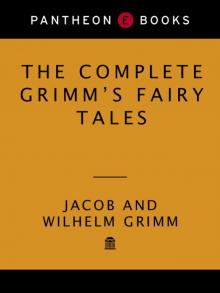 The Complete Grimm's Fairy Tales
The Complete Grimm's Fairy Tales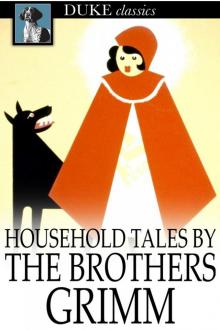 Household Tales by the Brothers Grimm
Household Tales by the Brothers Grimm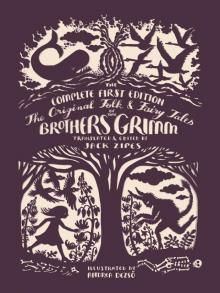 The Original Folk and Fairy Tales of the Brothers Grimm
The Original Folk and Fairy Tales of the Brothers Grimm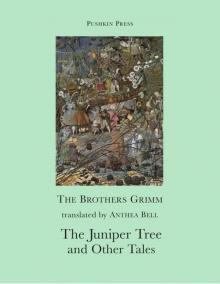 The Juniper Tree and Other Tales
The Juniper Tree and Other Tales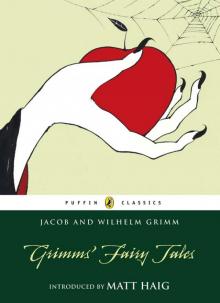 Grimms' Fairy Tales
Grimms' Fairy Tales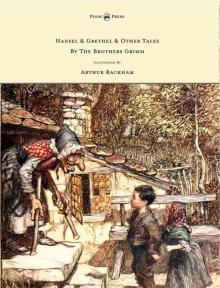 Hansel & Grethel - & Other Tales by the Brothers Grimm
Hansel & Grethel - & Other Tales by the Brothers Grimm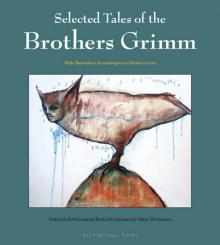 Selected Tales of the Brothers Grimm
Selected Tales of the Brothers Grimm